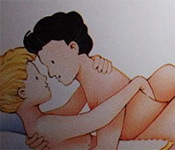My son is 3 years old this year. He cried in the middle of the night because of leg pain. The doctor in his hometown suggested taking a film for examination. The initial diagnosis was that the right femoral head was flat and had necrotic symptoms, which made the family worried. However, children with relatives and friends also experienced similar symptoms, which were later said to be normal growth pain. Excuse me, in the case of my son, what kind of examination should be done to rule out the possibility of femoral head necrosis? In addition, what are the obvious differences between the symptoms of growth pain and femoral head necrosis? Mr Qiang
Answer: Hong Manjie, director of orthopedics department of the First Affiliated Hospital of Guangdong Pharmaceutical College, chief physician
Growth pain is a special physiological phenomenon during children's growth and development, which is mostly seen in children aged 3-12 years. The general symptoms are pain around the knee joint or in the front of the lower leg. These parts have no history of trauma, and their activities are normal. There is no redness, swelling or tenderness in local tissues. If the possibility of other diseases is excluded through examination, it can be considered as "growth pain". Growth pain generally does not need special treatment, but can be relieved by massage, physical therapy and reduced exercise.
However, if the child still has leg pain, especially hip pain, after corresponding nursing, it is necessary to consider whether transient synovitis of the hip joint or epiphyseal disease of the femoral head. However, it is difficult to distinguish between the two in the acute stage. Generally speaking, transient synovitis is mainly characterized by local pain, high intra-articular pressure, and no thickening of synovium. The clinical manifestations of hip joint in patients with femoral head epiphysis disease are mainly claudication, pain in the affected hip joint, and limited movement.
Necrosis of the femoral head can be diagnosed by MRI. When the femoral head has been flattened and the epiphysis has been destroyed, and other inflammatory changes of the joint have been excluded through routine blood test, erythrocyte sedimentation rate, C-reactive protein and related biochemical tests, the synovial thickening has diagnostic significance, and the diagnosis is basically established. In clinic, conservative treatment or surgical treatment can be selected according to the classification of femoral head epiphyseal disease and whether there is "high-risk femoral head". It is recommended that you take your child to a regular hospital for further examination. (Reporter Weng Shuxian, Correspondent Zhuang Wenbin, Wu Liangjun)
![]()



